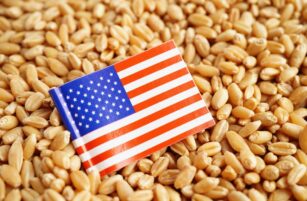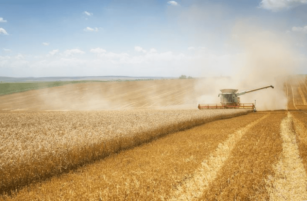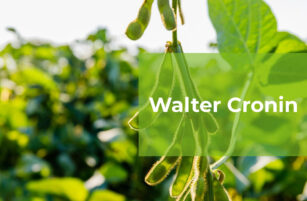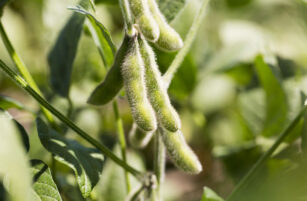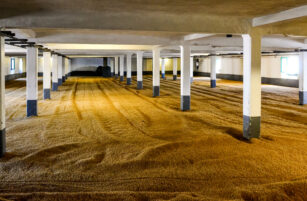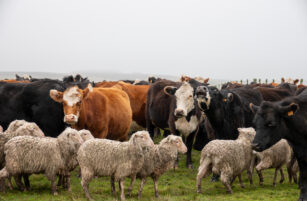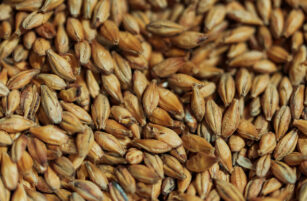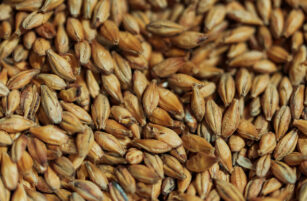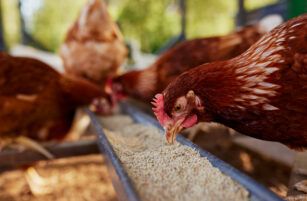Insight Focus
Corn prices rose in Chicago on strong demand. European grains faced pressure, with France’s slow corn harvest and low Russian yields raising supply concerns. Looking ahead, European grains may stay supported, while US grains face potential downside risks.
Corn prices in Chicago increased, despite a negative Friday that led to weekly losses across other grains, particularly European ones. While Europe faced a challenging week, supply-side risks persist, with France’s corn harvest progressing slowly and Russian corn yields remaining exceptionally low.
In Chicago, corn is in full harvest, and we see no justification for the market to trade higher. There are still no updates on Russia reducing its export quota for wheat. We anticipate European grains will remain supported, while US grains may face some downside risk.
Our forecast for Chicago corn for the 2024/25 crop year (September/August) remains unchanged at an average of USD 3.90/bushel. The average price since September 1 is currently USD 4.10/bushel.
Corn Demand boosts Chicago prices
Corn in Chicago began the week positively and maintained this momentum, closing higher due to strong demand reported in weekly exports, which nearly doubled compared to the previous week. This rally occurred despite the harvesting pace being significantly higher than last year and the five-year average, although profit-taking led to a sell-off last Friday.
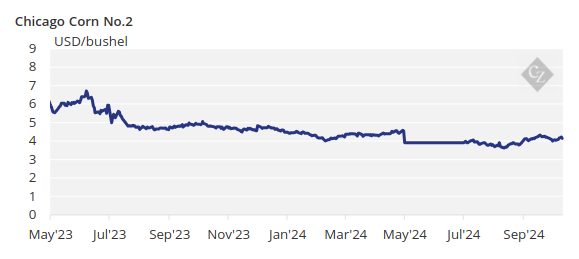
Interestingly, Euronext traded sideways throughout the week, not following Chicago’s rally, and saw a 2% loss on Friday. The harvest in the Black Sea region is mostly complete but has faced significant quality issues, resulting in many offers being withheld from the market.
As of now, US corn is 65% harvested, matching last year’s pace and the five-year average. French corn conditions are rated at 75% good or excellent, three points lower week-on-week and down from 83% last year. Harvesting in France is only 25% complete, significantly slower compared to 82% harvested at this time last year and the five-year average of 69%.
Ukrainian corn is 67% harvested versus 48% last year, with yields at 5.72 tonnes/ha, down from 6.84 tonnes/ha last year. The summer corn planting in Brazil is 32.3% complete.
US Wheat Rises as Europe Falls
In the wheat market, Chicago and Euronext moved in opposite directions—Chicago prices rose while European prices fell. Dry conditions in the US were the primary reason for the positive week, although profit-taking on Friday resulted in weekly losses of less than 1%. European wheat, on the other hand, experienced losses of around 4%, driven by rumours that Russia would lower its export prices.
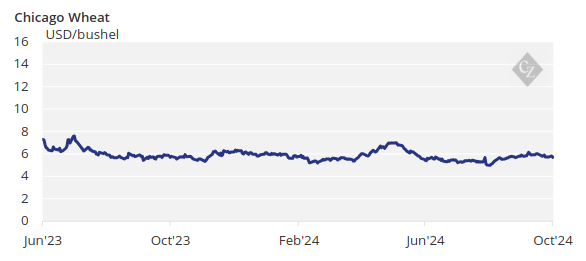
The initial forecast for Russian wheat production in 2025/26 was released last week, estimating a range of 80 to 85 million tonnes, compared to the five-year average of 88.1 million tonnes and this year’s harvest of 81.5 million tonnes.
US winter wheat planting is currently 73% complete, compared to 74% last year and the five-year average of 64%. Russian wheat is now fully harvested, with a total of 81.5 million tonnes collected, while winter wheat planting is 83.2% complete. In Ukraine, winter wheat planting is 86% complete, up from 79% last year, and in France, it stands at 21% complete, down from 50% last year and the five-year average of 47%.
Weather forecasts indicate favourable rains for the US corn belt, while dry conditions are expected for the wheat areas. Brazil is set to receive widespread rains across the central and southern regions. Northwest Europe will likely experience rain, whereas Eastern Europe and Ukraine are expected to remain dry.


